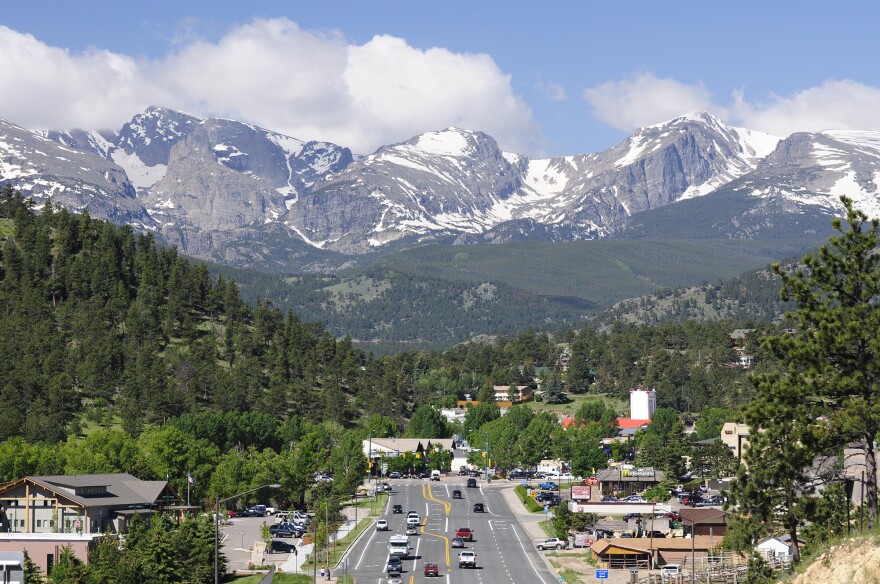A new report shows visitors to national parks spent a record amount in surrounding communities last year, providing a major economic boost to those areas.
According to the Interior Department report, visitors spent nearly $24 billion last year on expenses like hotels, restaurants and gas around the parks – a 16% increase from 2021. Lodging drew the largest share of spending – $9 billion nationally. Restaurants were next in line, with $4.6 billion.
“Visitation to national parks would be really challenging without the folks in local communities who are there to support that tourism industry,” said Naaman Horn, who works in the Intermountain regional office for the National Park Service. “They're providing essential services to visitors who are coming to national parks.”
Visitors to parks in the Mountain West proved to be particularly spendy. Utah was third in the nation for visitor spending, while Arizona, Colorado, Montana and Wyoming were all in the top 15, according to the report.
Driving that spending in the Mountain West were Grand Canyon and Zion national parks, where visitors spent $759 million and $672 million in communities near the parks, respectively. Rocky Mountain National Park in Colorado and Grand Teton National Park in Wyoming were not far behind . This com es as many nati onal park s have seen a return to pre-pandemic visitor numbers , wi th sever al of t he most popular parks being in the Mount ain West.
The report also estimated that this spending supported nearly 380,000 jobs and provided $50.3 billion in economic output.
“Not only are they spending money and building the economy, but (they are) also bringing jobs to our local areas to support folks who are visiting national parks,” Horn said.
Visitation levels have increased for many parks, though not all saw more throngs. National parks received 312 million recreation visits last year – up 5% from 2021, according to the report. But some parks, like Yellowstone, saw a decrease in visits — primarily due to a historic flooding event there last June.
“We are excited that we've had a heightened interest, as usual, from visitors joining our national parks and coming to see some of the amazing places across the Mountain West,” Horn said.
But Emily Douce of the National Parks Conservation Association senses a looming problem. She said the Republican-led House of Representatives has proposed a 2024 budget that would cut the National Park Service’s funding by 12.5%, or $433 million. The association predicts the cut would lead to the loss of 1,000 NPS jobs.
“It's ironic to see that our parks are so loved—and loved by both sides of the aisle—yet the House of Representatives proposed a drastic budget cut,” she said. “That is devastating to our parks and the visitors that enjoy them.”
Without proper funding, parks won’t be able to do the maintenance and improvements needed to make them sought-after destinations, Douce said. That could further hurt surrounding businesses.
“These budgets provide resources for the staff that provide education to visitors or maintenance on our trails, and also cultural and natural resource protection specialists,” she said. “As the visitation is increasing, they need those rangers on the ground to visit with their visitors and protect the resources.”
Horn, a spokesperson for the National Park Service, would not comment on the House proposal but was optimistic that the economic boost f rom visito rs would continue.
“I imagine that there will always be an interest in visiting our national parks and that the interest from the public will remain pretty stable as years progress,” he said. “National parks are an important driver for the economy across America, and bring an influx of money and visitors to areas where tourism is an important economic factor.”
The House and Senate will continue to negotiate the 2024 federal budget through the fall.
This story was produced by the Mountain West News Bureau, a collaboration between Wyoming Public Media, Nevada Public Radio, Boise State Public Radio in Idaho, KUNR in Nevada, KUNC in Colorado and KANW in New Mexico, with support from affiliate stations across the region. Funding for the Mountain West News Bureau is provided in part by the Corporation for Public Broadcasting.
Copyright 2023 KUNC. To see more, visit KUNC. 9(MDEwODI1MTE0MDEzNTk1NjQ4ODc4OTk0Ng004))


